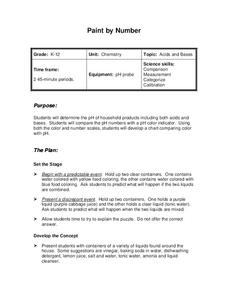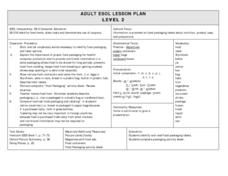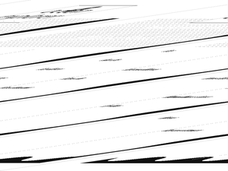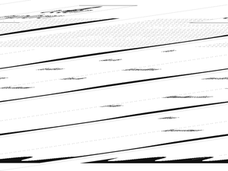Curated OER
All About Aluminum
Students examine the metal aluminum. In this metal properties lesson, students experiment to distinguish between aluminum and other metals. Students assess how aluminum is created and recycled.
Curated OER
Remainder Reminder
For this remainder worksheet, students use number sentences to solve a set of 6 problems that use 2 number sentences given at the top of the page. Answers on page 2.
Curated OER
Kitchen Chemistry
Fifth graders examine both physical and chemical changes, and how to identify the difference between the two. They observe the changes that occur in butter when it is exposed to heat and cold, heat energy. In their notebooks, they write...
Curated OER
What's the Matter?
First graders identify solids, liquids, and gases. In this matter activity, the teacher guides students through numerous demonstrations as they determine the properties of solids, liquids, and gases and classify things as each. As the...
Curated OER
Making A Natural pH Indicator
Students make their own pH indicator from red cabbage. Red cabbage contains a chemical that turns from its natural deep purple color to red in acids and blue in bases. Students boil the cabbage to get the pH indicator.
Curated OER
Looking At Acid's Effects On Metals
High schoolers perform an experiment that demonstrates acid rain. The chemical effect of acids on metals may take at least five days for the human eye to see, even though the reaction starts as soon as the acid contacts the metal.
Curated OER
Chemistry: pH Probe
Students conduct a pH probe of various household products including both bases and acids. In groups, they use litmus paper to test such liquids as amonia, vinegar, and detergent to discover which are acids and which are bases. Finally,...
Curated OER
Natural Dyeing with Plants - Scientific Method
Students study the components of scientific investigation by planning and carrying out an experiment in natural dyeing, seeing if different kinds of metal dye pots affect the color one gets from the same plant material.
Curated OER
Cotton Seed Planting
Students using scientific inquiry will observe and record in daily journals their findings on cotton seeds. They measure, graph, and then communicate their discoveries about plants to each other.
Curated OER
ADULT ESOL LESSON PLAN--Level 2--Consumer Education
Students, after reviewing an extensive list of vocabulary terms on the board, identify/label food items, how much they cost and the value of using coupons to save money. In addition, they practice reading the labels on the food packaging...
Curated OER
The Circulatory System
Young scholars explore the circulatory system of animals. Using the Internet, students research animals without circulatory systems. They identify the three types of blood vessels and describe the flow of blood through the heart....
Curated OER
Water Retention and Soil Variation in Local Ecosystems
Students identify the differences in local soil types and the relationship between soil size and water retention. They are introduced to microenvironmental conditions in ecosystem sustainability.
Curated OER
Bite Sized Core Sampling
Students define the origin of rock samples and how surface core samples can tell us about the history and make-up of Mars. Candies are used as a Martian surface sample. Students study the samples and make a hypothesis about the cause of...
Curated OER
Exploring the Properties of Matter in the Preschool
Students study the properties of the physical and natural world. In this properties of the physical and natural world instructional activity, preschool students work at discovery tables to see how simple machines work, what happens when...
Curated OER
Safe Subs
Students investigate ways to reduce use of hazardous materials. In this safe substitutes lesson, students review hazardous wastes used in many homes and possible safe substitutes for these harmful chemicals. Students write and decorate...
Curated OER
Measurement Benchmarks and Conversions
Young scholars explore the concept of measurement. For this measurement lesson, students determine appropriate units of measure for objects in the classroom. Young scholars discuss the importance of measuring objects with the same unit...
Curated OER
MAKING THREE DIMENSIONAL PLANT AND ANIMAL CELLS
Learners create two different cells, one plant and one animal. In this plant and animal cell lesson students form groups and construct a part of a cell. Learners then put them all together to form one plant or animal cell.
Curated OER
What is a Karst
Students investigate landforms by holding a class experiment. In this topography lesson, students define the word "karst" and discover why sinkholes are created on the surface of the Earth by completing worksheets. Students create a...
Curated OER
What is a Karst?
Students examine the process that creates limestone. In this limestone lesson students complete a worksheet and participate in a lab activity.
Curated OER
How is the Strength of an Acid Determined?
Students study acids and how they can be measured. In this acid lesson students distinguish the properties that create strong and weak electrolytes.
Curated OER
African life VS American life: Food and 3rd World and 1st World counties
Third graders explore the difference in 3rd world and 1st world countries. In this social studies lesson, 3rd graders are divided into groups and given varying amounts of food. Students discuss the unfair distribution of the food....
Curated OER
Garbage Routes
Students brainstorm a list of places where garbage is disposed. Working in groups, they discover through a classroom simulation how garbage can wither be recycled or hauled to a landfill. they complete the activity with a worksheet on...
Curated OER
Balloon Lungs
Students study the function of lungs. In this lung function lesson, students complete an experiment using balloons to study the way lungs work. Students study a diagram of their lungs and make a hypothesis for their lung capacity...

























